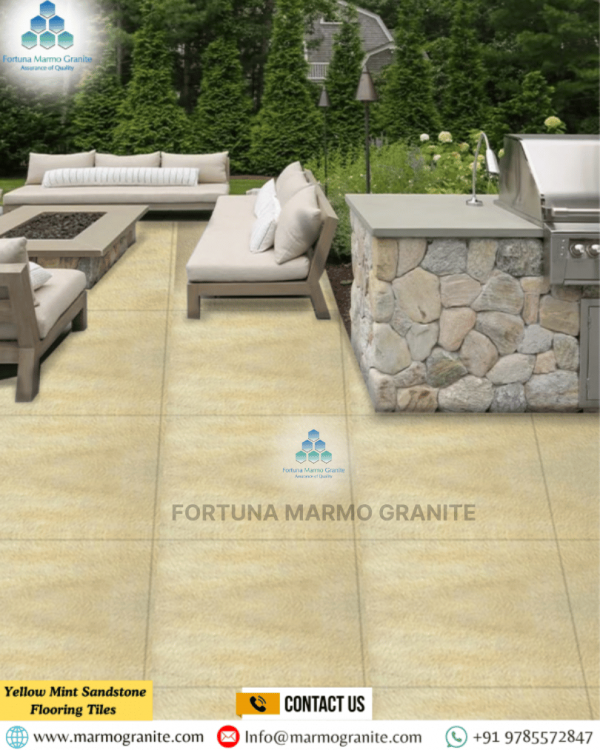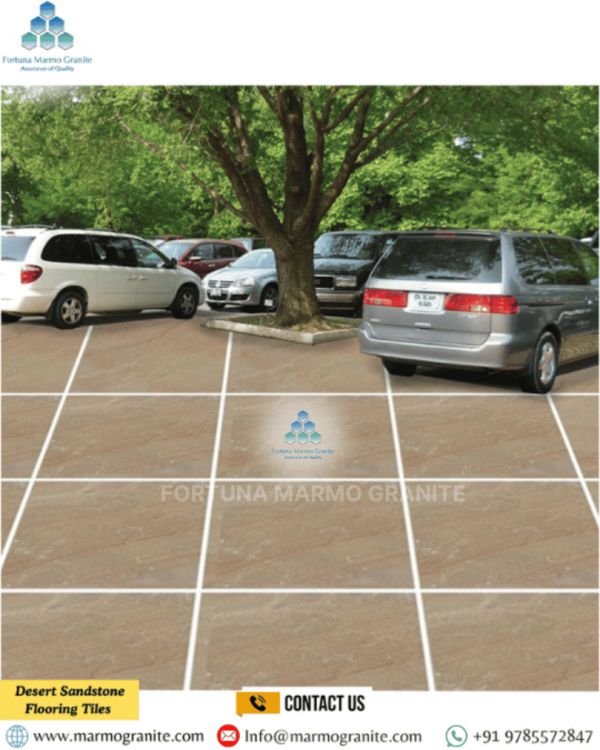How to Choose the Right Sandstone for Your Interior and Exterior Projects
How to Choose the Right Sandstone , renowned for its earthy hues and rich natural textures, has remained one of the most cherished building materials across cultures and eras. Its inherent beauty lies not just in its appearance but in the quiet elegance it brings to any space it graces. From ancient fortresses and regal palaces to contemporary homes and modern commercial spaces, sandstone effortlessly bridges the gap between old-world charm and present-day sophistication. Its adaptability is remarkable—seamlessly fitting into both interior and exterior applications. How to Choose the Right Sandstone, Whether adorning a cozy fireplace wall, creating a rustic patio, or forming the entire cladding of a majestic structure, sandstone provides a lasting impression that exudes warmth and character. Yet, despite its wide appeal, choosing the right variety for your specific needs is no simple task.
Additionally, How to Choose the Right Sandstone, The right choice depends on several factors, including aesthetic preferences, functional requirements, climatic conditions, and maintenance expectations. For instance, while a smooth, light-toned sandstone may enhance a serene indoor setting, a denser, darker variety might be better suited to withstand the elements in outdoor landscapes. Ultimately, How to Choose the Right Sandstone, This comprehensive blog is designed to demystify the selection process and equip you with the insights needed to confidently choose the ideal sandstone. Whether your project involves a refined indoor feature or a large-scale exterior overhaul, understanding these nuances will empower you to make decisions that result in visually stunning, structurally sound, and enduring outcomes.


Understanding Sandstone: A Geological Brief
Before diving into selection, it's crucial to understand what sandstone is. It's a clastic sedimentary rock primarily composed of sand-sized mineral grains or rock fragments. The most common mineral is quartz, but sandstone can also contain feldspar, mica, and various rock fragments. These grains are cemented together by minerals like silica, calcium carbonate, or iron oxides, which significantly influence the stone's color, strength, and porosity.
The variations in mineral composition, grain size, cementing material, and geological formation processes result in the vast array of sandstones we see today. From the fine-grained, evenly colored types to the coarse-grained, highly variegated ones, each has its own story and its own optimal use.
Key Considerations for Sandstone Selection
Project Type: Interior vs. Exterior
This is the most fundamental distinction. Sandstone used outdoors needs to withstand the elements – rain, sun, frost, and temperature fluctuations. Interior sandstone, whilex still requiring durability, isn't subjected to the same harsh conditions.
- Exterior Projects: For patios, facades, pathways, and garden features, opt for sandstones known for their robust weather resistance, low porosity, and high compressive strength. Sandstones with high silica content tend to be more durable outdoors. Consider the local climate; in areas with freeze-thaw cycles, a sandstone with low water absorption is paramount to prevent cracking.
- Interior Projects: For flooring, wall cladding, fireplaces, and decorative elements, a wider range of sandstones can be considered. Here, aesthetics, texture, and ease of maintenance often take precedence. While durability is still important, the same level of extreme weather resistance isn't required.
Durability and Strength (Compressive Strength and Abrasion Resistance)
- Compressive Strength:
Compressive strength is a critical mechanical property that defines how much load or pressure a stone can bear before it breaks or deforms. In the case of sandstone, higher compressive strength makes it suitable for heavy-duty construction applications such as columns, load-bearing walls, and foundation work. Sandstones with compressive strength ranging from 50 to 150 MPa are typically considered robust and reliable for structural use. This property becomes especially important in large architectural projects, landscaping, and pathways where long-term structural integrity is essential. - Abrasion Resistance:
Abrasion resistance indicates how well a stone can resist surface wear caused by foot traffic, dragging objects, or environmental erosion. It is a key factor for surfaces that experience continuous or heavy usage—like floors, stair treads, patios, and kitchen countertops.
Porosity and Water Absorption
Porosity is the measure of void spaces within the stone, and water absorption is the amount of water the stone can absorb. These are critical for both interior and exterior applications.
- Exterior: High porosity leads to higher water absorption, making the stone susceptible to freeze-thaw damage, efflorescence (white mineral deposits), and biological growth (moss, algae). Low porosity is highly desirable for outdoor use.
- Interior: While less critical than outdoors, high porosity can make the stone more prone to staining, especially in kitchens or bathrooms. Sealing is often necessary for porous sandstones in these areas.
Color and Aesthetics
Sandstone's color palette is incredibly diverse, ranging from creamy whites and golden yellows to earthy reds, grays, and even subtle greens. The color is influenced by the mineral composition and the cementing agent.
- Quartz-rich sandstones: Often lighter in color, ranging from white to light gray or tan.
- Iron oxide-rich sandstones: Tend to exhibit warmer tones like reds, browns, and yellows.
- Clay minerals: Can contribute to grays and greens.
Texture and Finish
The texture of sandstone is as varied as its color. Different finishes can dramatically alter the look and feel of the stone.
- Natural Cleft/Split: Achieved by splitting the stone along its natural bedding planes, resulting in a rustic, uneven surface. Ideal for rustic outdoor paving and wall cladding.
- Honed: A smooth, matte finish achieved by grinding. Provides a more contemporary look and is suitable for both interior and exterior flooring and wall cladding.
- Sawn/Machine Cut: A relatively smooth, even finish with slight saw marks visible. Often used for precise installations.
- Flamed/Thermal: Achieved by applying intense heat to the surface, causing some crystals to pop out, creating a rough, non-slip texture. Excellent for outdoor paving and areas requiring slip resistance.
- Bush-hammered: A heavily textured finish with small indentations, providing a rugged, anti-slip surface.
- Polished: A highly reflective, glossy finish, rarely seen on sandstone due to its inherent porosity and relatively softer nature compared to granite or marble. When present, it's typically for very dense sandstones and interior applications.
- Slip Resistance
Crucial for flooring, especially in bathrooms, kitchens, and outdoor areas prone to moisture. Textured finishes like flamed, bush-hammered, or natural cleft offer better slip resistance than honed or polished surfaces.
- Maintenance and Sealing
All natural stone requires some level of maintenance. Sandstone, being porous, often benefits from sealing.
- Sealers: Penetrating sealers help reduce water absorption and prevent staining without altering the stone's appearance. Topical sealers create a protective layer on the surface. Discuss sealing requirements with your supplier.
- Cleaning: Regular cleaning with pH-neutral cleaners is essential. Avoid harsh chemicals that can damage the stone.
Popular Sandstone Varieties and Their Applications
While regional names vary, here are some general categories and their common uses:
- Indian Sandstone: Moreover, Highly popular globally, offering a vast range of colors (Raj Green, Autumn Brown, Mint Fossil, Kandla Grey, Agra Red, Dholpur Beige). Known for its durability and aesthetic appeal, widely used for patios, paving, wall cladding, and interior flooring. Many varieties are excellent for both interior and exterior.
- Yellow Sandstone: In addition, Often characterized by warm, golden hues. Ideal for creating inviting and sunny spaces. Suitable for both indoor and outdoor applications depending on its density.
- Red Sandstone: Yet, Rich in iron oxides, offering deep, earthy red and brown tones. Imparts a sense of grandeur and warmth. Historically used in iconic structures. Durable for exteriors and striking for interior features.
- Grey Sandstone: Ranging from light to dark grey, offering a contemporary and sophisticated look. Excellent for modern designs, particularly for exterior paving and interior flooring.
- Buff/Cream Sandstone: Soft, neutral tones that blend seamlessly with various design styles. Creates a serene and elegant ambiance. Versatile for both interior and exterior.
Conclusion
Indian Sandstone Supplier , choosing the right sandstone for your interior and exterior projects is a crucial decision that blends artistic vision with practical considerations. How to Choose the Right Sandstone, The natural charm of sandstone, with its earthy textures and wide range of colors—from the deep richness of Agra Red to the soothing tones of Mint, Fossil, and Yellow—makes it an exceptional material for everything from flooring and wall cladding to outdoor pathways and decorative facades. However, the ideal sandstone must align with the intended use, climate conditions, and desired design theme.
Moreover, At Fortuna Marmo Granite, we understand that every project is unique, and our mission is to help you navigate the vast world of sandstone varieties with confidence and clarity. Especially, With years of expertise in sourcing, manufacturing, and exporting premium Indian sandstone across the globe, we offer more than just stone—we offer enduring quality, custom finishes, and expert guidance to bring your design aspirations to life. In addition, Our team is dedicated to helping homeowners, architects, and builders choose sandstone that not only enhances visual appeal but also ensures lasting performance and sustainability. Consequently, When you choose Fortuna Marmo Granite, you're partnering with a trusted name committed to excellence, authenticity, and customer satisfaction. Let us be your go-to source for the finest sandstone solutions that combine natural beauty with timeless strength, transforming your spaces into works of art that endure for generations.

